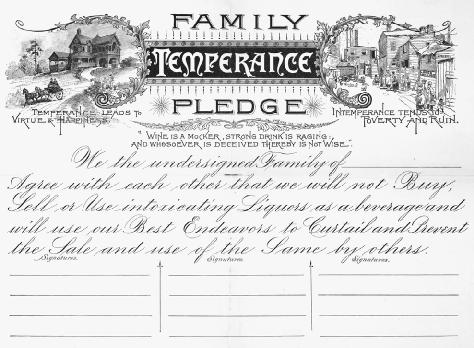
Moral Reform
Moral Reform
The earliest reformers wanted to persuade Americans to adopt more godly personal habits. They set up associations to battle profanity and Sabbath breaking, to place a Bible in every American home, and to curb the widespread heavy use of hard liquor. By discouraging drinking and gambling and encouraging observance of the Sabbath, reformers hoped to “restore the government of God.”

One of the most dramatic attempts at moral reform involved Magdalene societies, which sought in the 1830s and 1840s to rehabilitate prostitutes and to discourage male solicitation. The New York Moral Reform Society had 15,000 members in 1837 and had branches in New England and upstate New York. Members walked into brothels, prayed for the prostitutes, publicized in the names of men that patronized prostitutes in newspapers, visited prostitutes in jails, and lobbied for state laws that would make male solicitation of prostitutes a crime.
The most extensive moral reform campaign, however, was that against drinking, which was an integral part of American life. Many people believed that downing a glass of whiskey before breakfast was conducive to good health. Instead of taking coffee breaks, people took a dram of liquor at eleven and again at four o’clock. People drank after meals “to aid digestion,” and had a nightcap before going to sleep. Campaigning politicians offered voters generous amounts of liquor during campaigns as rewards for “right voting” on election day. On the frontier, one evangelist noted, “a house could not be raised, a field of wheat cut down, nor could there be a log rolling, a husking, a quilting, a wedding, or a funeral without the aid of alcohol.”
Easily affordable to even the poorest Americans—a gallon of whiskey cost twenty-five cents in the 1820s—consumption had risen markedly since the beginning of the century. The supply of alcohol increased as farmers distilled growing amounts of corn into cheap whiskey, which could be transported more easily than bulk corn. By 1820, the typical adult American consumed more than seven gallons of absolute alcohol a year compared to 2.6 gallons today.
Reformers sought to alter the cultural norms that encouraged alcohol consumption by identifying liquor as the cause of a wide range of social, family, and personal problems. Many middle-class women blamed alcohol for the abuse of wives and children and the squandering of family resources. Many businesspeople identified drinking with crime, poverty, and inefficiency.
The stage was set for the appearance of an organized movement against liquor. In 1826, the nation’s first formal national temperance organization—the American Society for the Promotion of Temperance—was born. Led by socially prominent clergy and laypeople, the new organization called for total abstinence from distilled liquor. Within three years, 222 state and local anti-liquor groups were laboring to spread this message.
By 1835, an estimated two million Americans had taken the “pledge” to abstain from hard liquor. Temperance reform drew support from many Southerners and Westerners who were otherwise indifferent or hostile to reform. Their efforts helped reduce annual per capita consumption of alcohol from seven gallons in 1830 to three gallons a decade later, forcing 4,000 distilleries to close.
The sudden arrival of hundreds of thousands of immigrants from “heavy drinking” cultures heightened the concerns of temperance reformers. Between 1830 and 1860, nearly two million Irish arrived in the United States along with an additional 893,000 Germans. In Ireland, land was in such short supply that many young men were unable to support a family by farming. The only solution was to delay marriage and socialize with other young men in “bachelor groups,” a ritual that often involved heavy drinking. These immigrants probably drank no more than most native-born Americans before the 1830s, but increasingly heavy drinking was regarded as a problem demanding government action.
Two new approaches to the temperance movement arose during the 1840s. The first was the Washingtonian movement in which reformed alcoholics sought to reform other drinkers. As many as 600,000 drinkers took the Washingtonian pledge of total abstinence. The second approach was a campaign to restrict the manufacture and sale of alcohol, culminating in adoption of the nation’s first statewide prohibition law in Maine in 1851, which led to prohibition laws often being referred to as “Maine laws.” Convinced that moral suasion was ineffective, a minister argued strongly in behalf of prohibition laws: “You might almost as well persuade the chained maniac to leave off howling, as to persuade him to leave off drinking.” An emphasis on moral suasion gave way to a new stress on governmental action.

History Through…
…Social Movements
Review the images.

